
Everything in this slideshow
-
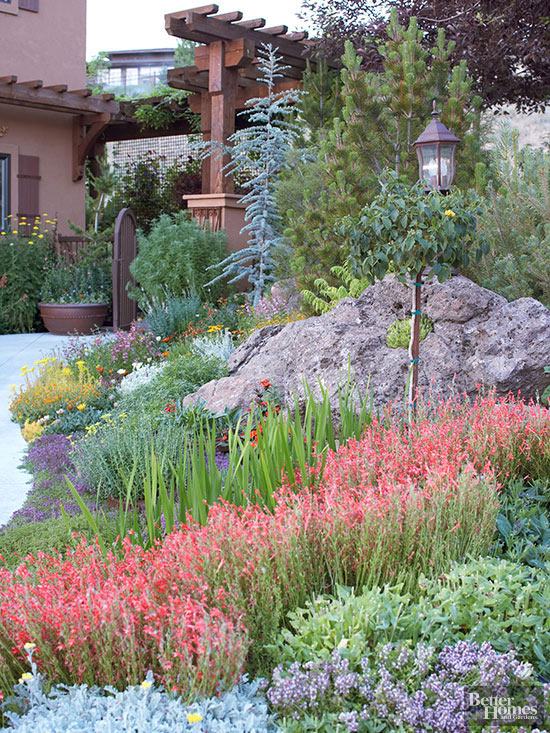
Xeriscaping Defined
The term “xeriscaping” was first coined by the Denver Water Board and has been used to describe landscaping methods that will reduce irrigation needs and maximize the use of natural precipitation. In this front yard, drought-resistant plants are staged around boulders that help block runoff after storms.
-
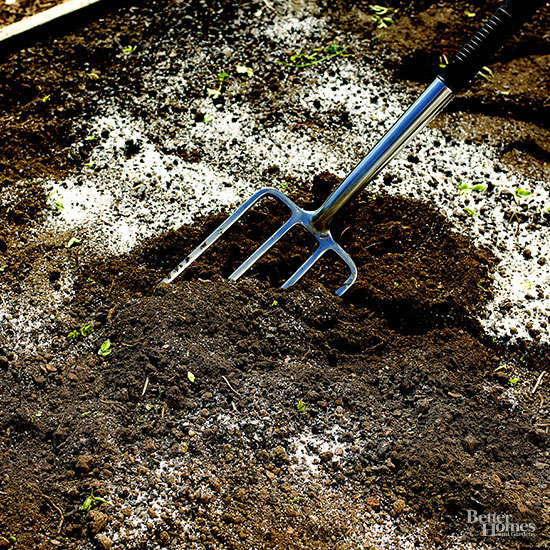
Improve Soil
The first step in creating a waterwise landscape is to improve your soil. Clay soils have small particles that bind together after a rain, forming a tight bond so moisture can’t absorb into the soil. Sandy soils, on the other hand, are more porous and allow rainfall to drain away too quickly. The ideal soil should contain plenty of organic matter that will act like a sponge holding water but releasing moisture as the plants need it.
- See how to improve garden soil.
-
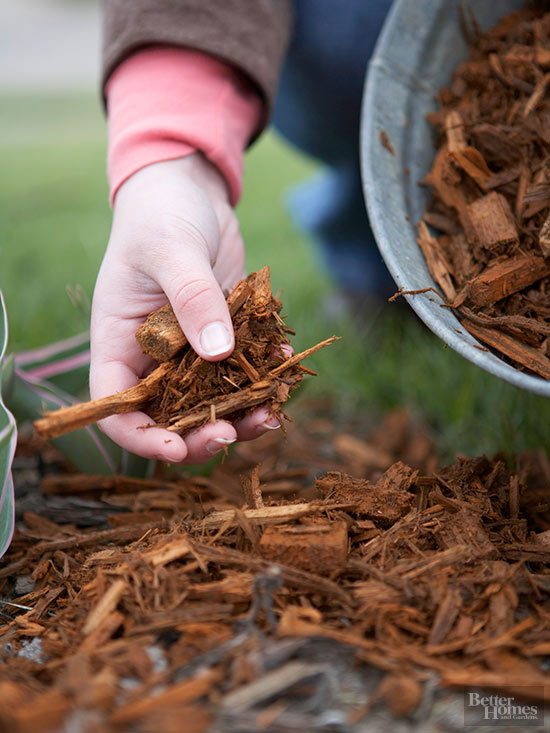
Rely on Mulch
Add a thick layer of mulch around your plants to help maintain consistent soil moisture. Organic mulches include shredded bark, compost, rotted manure, pine needles, leaves, grass clippings, and even newspaper. These mulches minimize evaporation and slowly break down in the soil, adding an extra dose of organic matter to the garden. Gravel, stone, and shells will also work, but won’t decompose in the soil and can be difficult to deal with if you want to move plants around.
- Learn how to pick the right mulch.
-
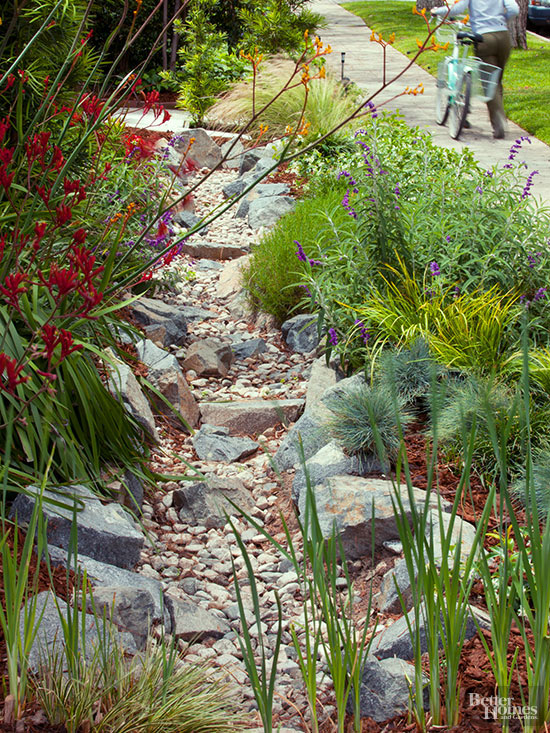
Stop Runoff
After a heavy rain do you see water running off your lot into the street or adjoining properties? Don’t let that happen. Instead, build a dry streambed that captures runoff and forces it to percolate into the soil. Here, a narrow streambed built at the base of a sloping front yard catches rainwater, preventing it from flooding into the street.
-
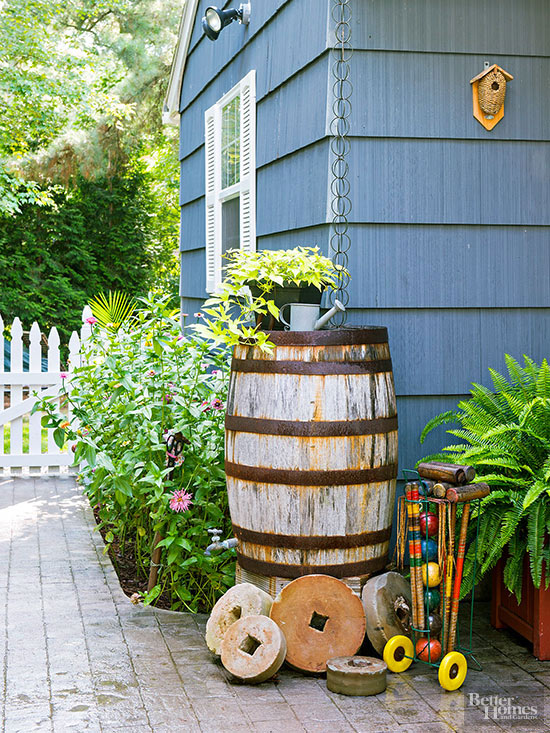
Capture the Rain
During drought, every drop of water is precious. Catch what you can every time it sprinkles with a rain barrel attached to your gutters. That way you can use the captured moisture to irrigate your garden instead of using valuable resources from your city water supply. In this garden, a rain chain channels runoff into a handsome wooden rain barrel. Note: Always check local regulations before installing a rain barrel. Believe it or not, some localities may ban them.
- Get step-by-step instructions for making a rain barrel.
-
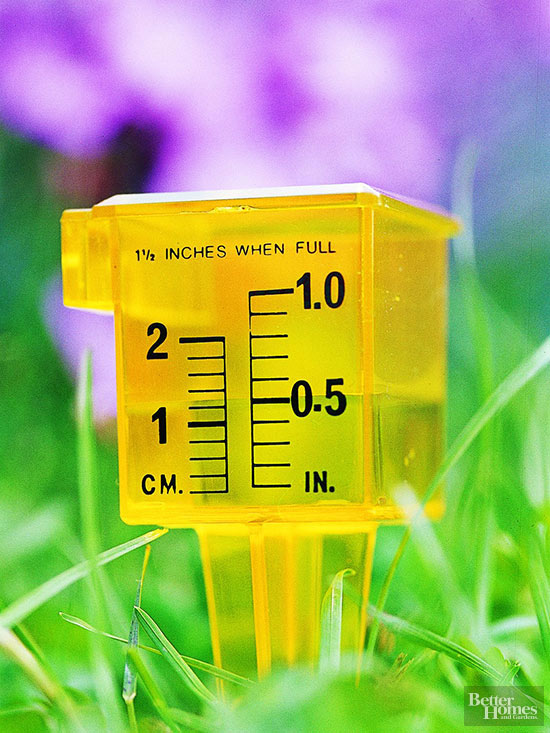
Keep Records
Install a rain gauge and use it to keep tabs on how much moisture your landscape is receiving. Most gardens do just fine on one inch of moisture a week, so if rainfall is generous there’s no need to water your yard. And, if you are using an automatic irrigation system, check the rain gauge to make sure you are not wasting water.
-
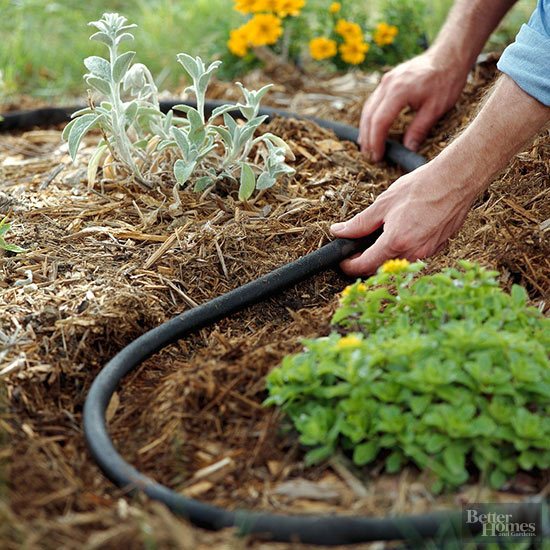
Water Wisely
Spraying your landscape with a hose is a wasteful and ineffective way to irrigate. In fact, frequent, shallow watering can make things worse by encouraging plants to develop shallow root systems that dry out quickly. Plants do best with less frequent, but deep watering. To accomplish this, use drip irrigation or a soaker hose that delivers water directly to the root zones of the plants. In this garden, a soaker hose is being installed under a layer of mulch to prevent evaporation.
-
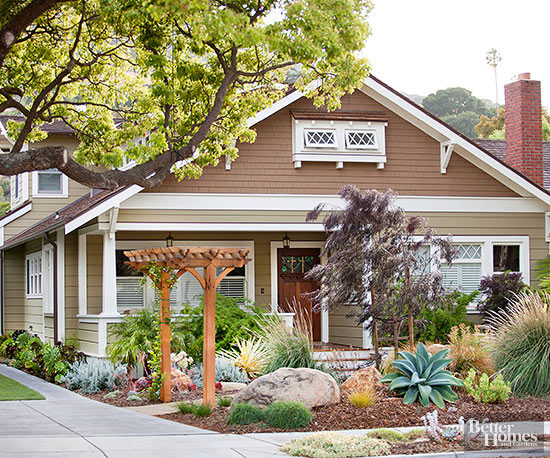
Eliminate Turf
Having a perfectly green lawn doesn’t make sense if you live in a region where water resources are precious. Turf grass generally requires as much as 2.5 inches of water per week in midsummer. That means you have to water every three or four days to keep it looking good. Instead, why not rip up your turf and replace it with low-maintenance, drought-tolerant plants. In this front yard, the grass was removed and replaced with ornamental grasses, agave, Euphorbia, and other easy-care plants.
- Get inspired by these yards with no grass.
-
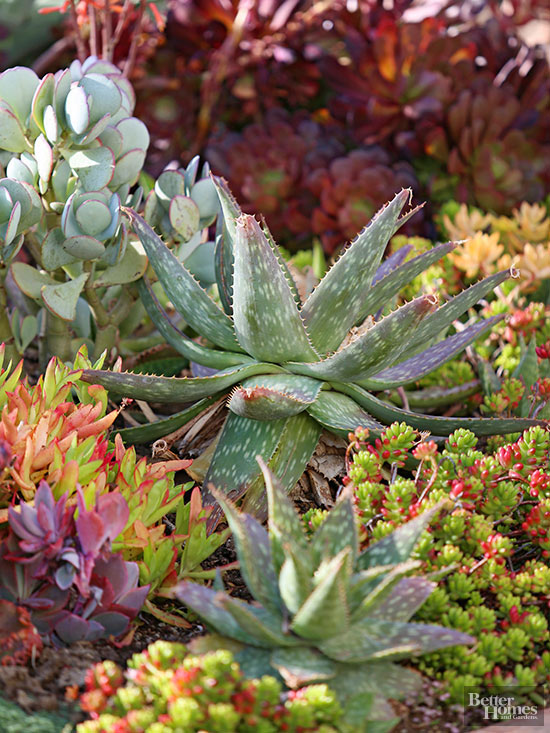
Try succulents
Who says you can’t have a colorful garden if you switch over to drought-defying plants? This colorful border contains Aloe saponaria in a mixed bed of sedum in jewel-like colors. Succulents are naturally drought-resistant and look great all summer long. If you live in the north, remember to read the plant tag before you purchase succulents to make sure they are winter hardy in your region. Sedum and Sempervivum are probably your best bet in cold climates.
- Get our complete guide to growing succulents.
-
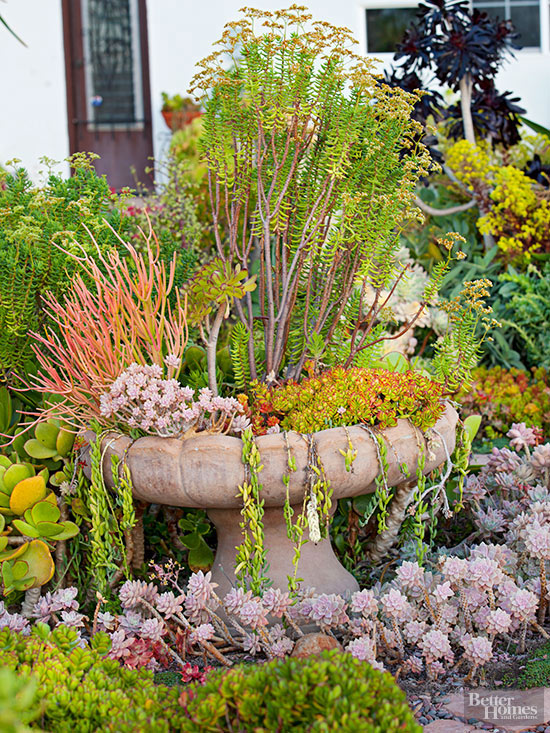
Rely on Containers
Container gardens need to be watered almost every day. That can be a problem if water resources are at a premium. But, you don’t need to put all your pots and planters away. Instead, fill them with colorful collections of waterwise plants that you can ignore when rainfall is scarce. In this vintage birdbath, you’ll find tall Crassula tetragonia blooming alongside Ghost Plant, Graptopetalum paraguayense, and Firestick pencil cactus, Euphorbia tirucalli.
- See how to grow succulents in containers.
-
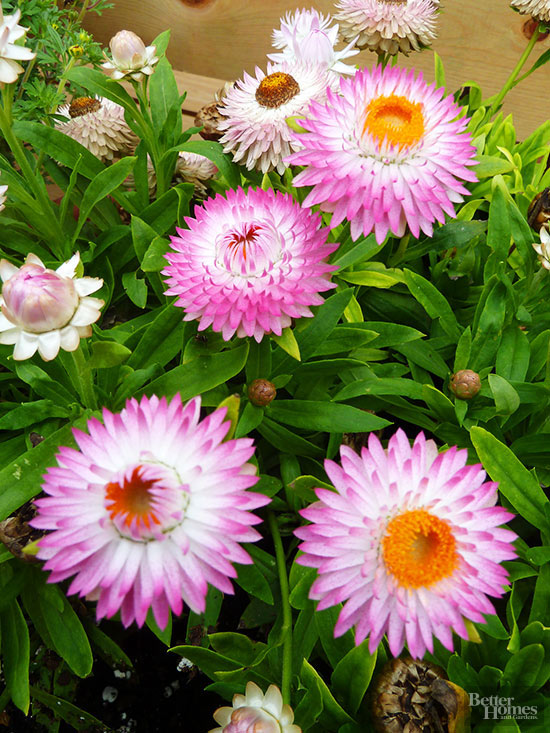
Choose Drought-Tolerant Annuals
When selecting annual flowers for your garden, look for species that are naturally drought-tolerant. Strawflower, for example, uses so little water that its pretty blooms are naturally dry and papery. This hardworking beauty grows equally well in the ground or in containers and comes in a variety of colors and bicolors. Here, variety ‘Dreamtime Jumbo Light Pink’ thrives in a sunny, dry location.
-
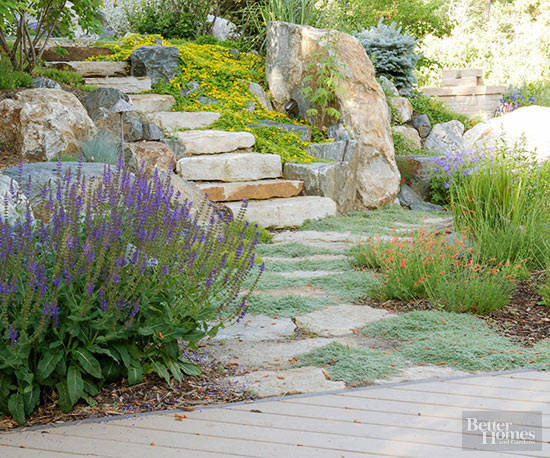
Plant Groundcovers
Stop erosion on slopes and hillsides with groundcovers. The plants’ dense root systems will form a spongelike layer beneath the soil that absorbs excess rainfall or irrigation. In shady locations, use groundcovers such as Ajuga, lamium, Pachysandra, or ivy. For exposed sunny spots, try ornamental grass, sedum, nepeta, or liriope. In this sloping backyard, woolly thyme and creeping Jenny were tucked around stepping-stones and boulders for color and erosion control.
- See more easy groundcovers for your garden.
-
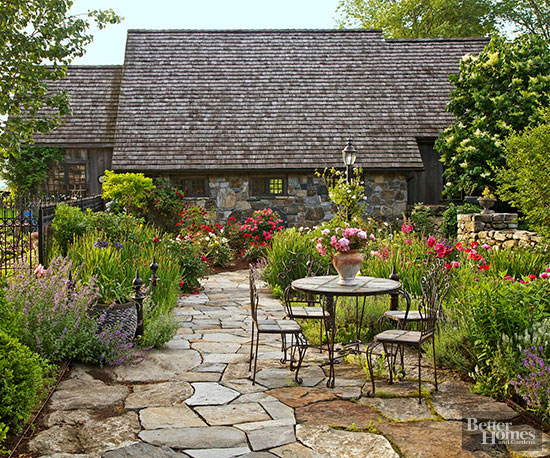
Let It Drain
When you build a new patio, try to avoid paving the area with concrete. A concrete patio may be cheaper and faster to install, but it’s not absorbent and any rain that falls will drain away quickly, possibly eroding nearby areas. Instead, create a more beautiful space with stepping-stones that also allow rainfall to seep into the ground between them. Whenever it rains in this backyard, the stone patio channels water to where it does the most good: into the soil.
-
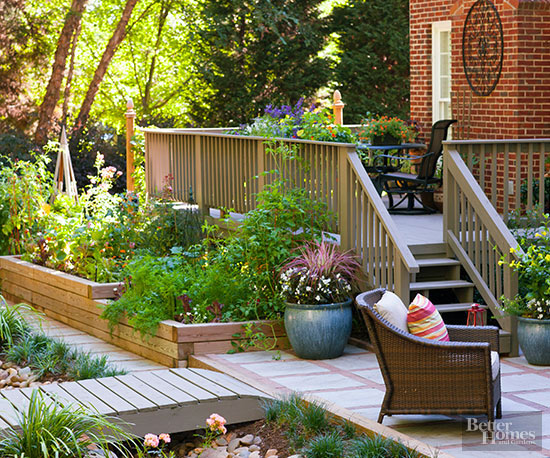
Create Water Zones
To save water, it’s a good idea to cluster thirstier plants together. That way you won’t have to water your entire landscape to keep things alive. Vegetables, for example, generally need more water than other plants, so pack them into a bed by themselves to irrigate them without wasting water. In this garden, crops are grown together in a raised bed tucked up against a back deck. Runoff is also trapped by a dry streambed that runs the length of the backyard.
-
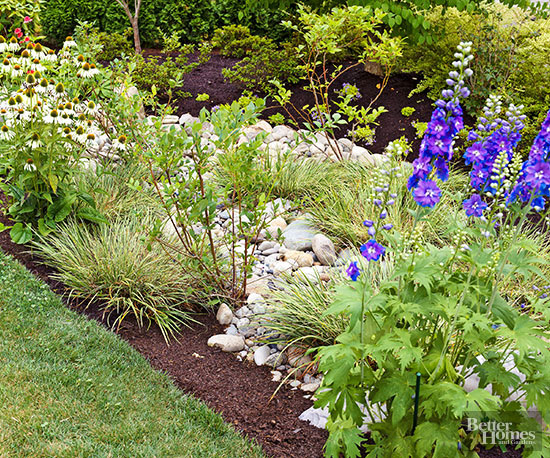
Build a Rain garden
It may sound counterintuitive, but creating a rain garden on a hill or slope is one of the best ways to deal with dry conditions and prevent runoff after a heavy storm. To make a rain garden, look for a low spot in your landscape that may fill with water after a heavy rain. Excavate the area and fill with improved soil. Then build a dry streambed that empties into the area. When it storms, the water will follow the streambed and pool in the rain garden. Add moisture-loving plants such as delphinium, papyrus, cardinal flower, canna, coneflower, black-eyed Susan, and elephant ear to absorb the collected water.
- Follow these six easy steps to a rain garden.
-
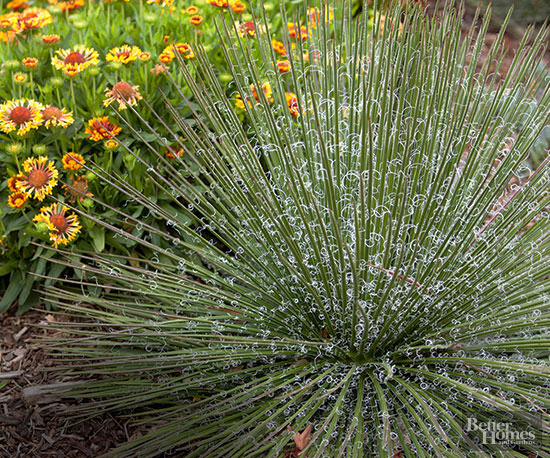
Read Up
Do a little research before adding plants to your waterwise landscape. Look for species and varieties that evolved in dry regions of the globe and therefore won’t beg for a drink every time the temperatures soar. Natives of Mexico, South America, and the Southwestern United States, agaves come in a wide range of colors and shapes and thrive in dry conditions. In this garden, thread-leaf agave thrives alongside a drift of Gaillardia.
Commonly called blanket flower, Gaillardia is an easy- care perennial native to the dry prairies of the United States.
-
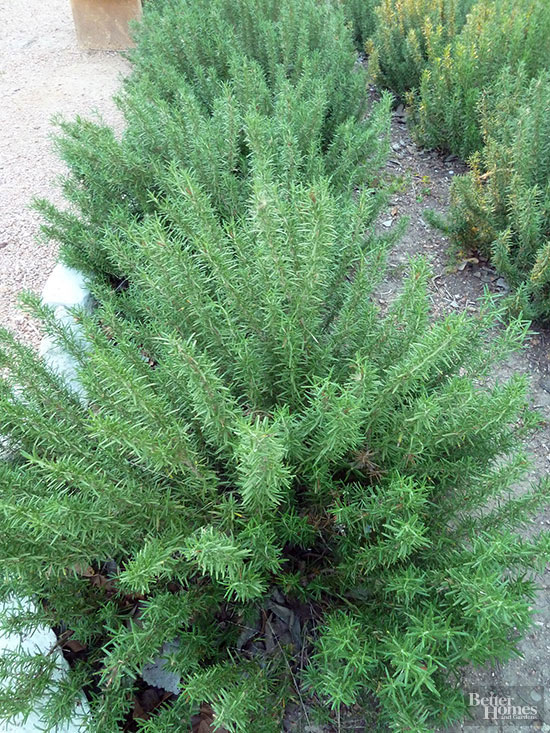
Include Herbs
Many of our common herbs such as thyme, rosemary, lavender, and oregano thrive in dry conditions. Native to the Mediterranean region, herbs will often die back if the soil is too wet, making them a top pick for dry landscapes. Herbs also add color and fragrance to any setting. One of our top picks for xeriscaping is rosemary. This tough-as-nails shrubby perennial is prized as much for its foliage and flowers as for its culinary uses. Rosemary is hardy outdoors in Zones 8-10.
-
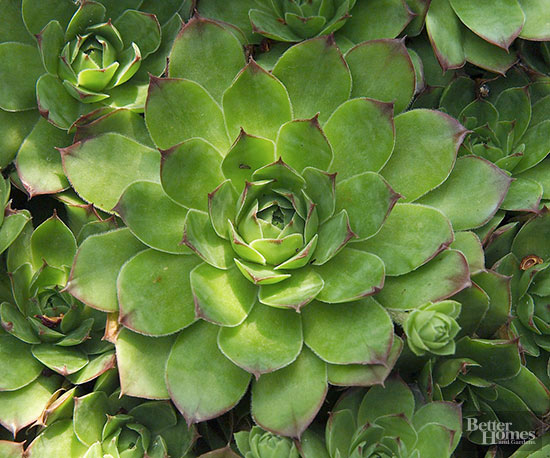
Think Small
A lot of the most drought-resistant plants are ground-hugging types that will slowly carpet your garden with colorful fleshy foliage. One of our favorites is Sempervivum, commonly called hens-and-chicks. Available in a variety of colors and shapes, these rugged perennials spread by aboveground stems called stolons. You can leave the babies in place or transplant them once they’ve developed their own root system. You also can tuck Sempervivums between boulders to stop seepage from eroding the soil.
-
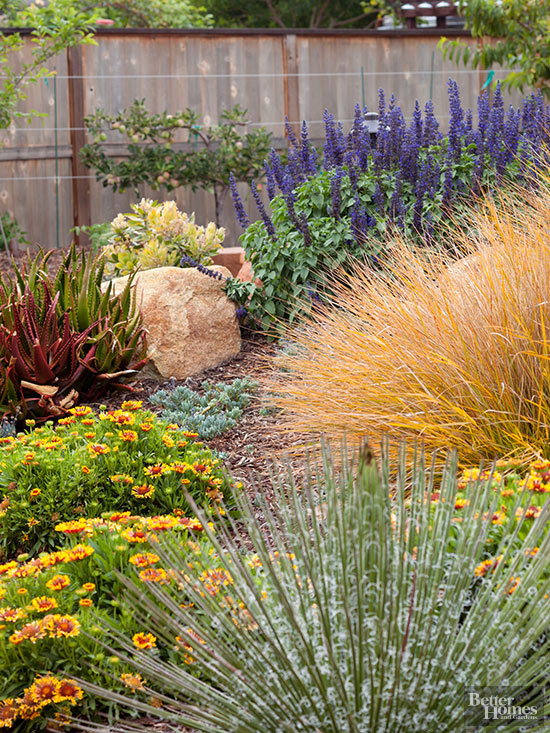
Stop the Wind
Wind and drought go hand in hand. That’s because wind causes plants to lose moisture from their leaves, forcing them to pull up additional sources of water from the soil. Plus, strong winds can even blow your topsoil away. That’s why, if you live in a windy location, it’s a good idea to add a fence or hedge to protect your landscape. In this exposed California garden, the plants are protected from drying winds by a 6-foot-tall privacy fence.
-
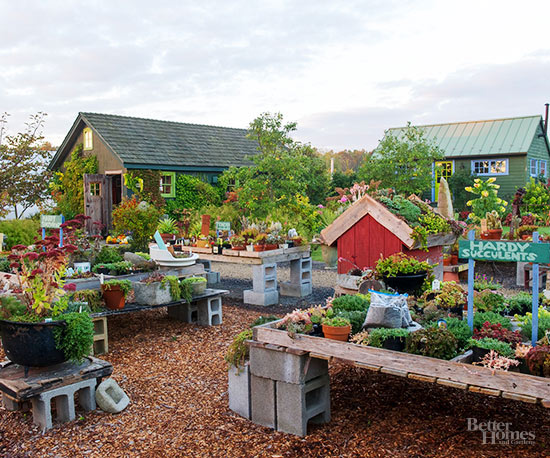
Shop Wisely
Whether you are buying plants online or in person, look for sources that specialize in drought-resistant species and varieties. They’ll be able to help you sort through the seemingly endless selection of annuals, perennials, shrubs, and trees that tolerate dry conditions. Plant tags alone don’t tell the whole story about how a particular plant will work in your backyard. At this New England garden center, hardy succulents are separated from their more tender cousins so there’s no chance of failure when winter comes.
-
Succulent Container Garden
Make containers full of succulents part of your xeriscaping plan! They’re portable, easy to maintain, and can bring an otherwise barren porch or patio to life.
-

SOURCE:http://www.bhg.com/gardening/landscaping-projects/landscape-basics/xeriscaping/